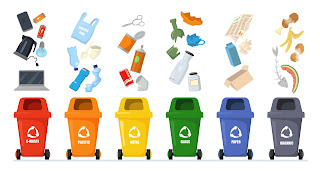Effective Ideas To Recycle Non-Recyclable Items
When it comes to recycling, there are really two different types of items: recyclable and non-recyclable. Recyclable items can be recycled over and over again without any loss in quality or decrease in value. Non-recyclable items, on the other hand, cannot be recycled and must be disposed of in a landfill.
So, what do you do with non-recyclable items? Here are a few options:
1. Incinerate them. This is the process of burning the item down to its basic constituents. The resulting ash can then be disposed of in a landfill. However, incineration releases harmful pollutants into the environment, so this should only be done as a last resort.
2. Send them to a landfill. This is the most common method of disposing of non-recyclable waste. However, landfills are slowly becoming full and they are not very good for the environment.
3. Recycle them. This may seem counterintuitive, but there are some companies that will recycle non-recycle items. They may not be able to recycle the entire item, but they can often recycle parts of it.
4. Upcycle them. This is the process of turning a non-recyclable item into something new and useful. For example, you could turn an old t-shirt into a pair of shorts or a scarf.
5. Compost them. This is the process of breaking down organic material into a nutrient-rich soil amendment. Non-recyclable items that are made of organic materials, such as paper or food waste, can be composted.
6. Reuse them. This is the simplest and most effective way to reduce waste or recycle items. If an item can be used again, there’s no need to dispose of it. For example, you could donate clothing to a thrift store or use a reusable shopping bag instead of a plastic one.
7. Reduce your consumption. The best way to reduce waste is to simply consume less. Buy only what you need and don’t throw away perfectly good items just because they’re no longer trendy.
8. Repair them. If an item is broken, see if you can fix it instead of throwing it away. Many items can be repaired with a little elbow grease and a trip to the hardware store.
Note: If you want to learn about How to start recycling with SwagCycle, then must visit the given link.
9. Make your own. Instead of buying disposable items, try making them yourself. For example, you could make your own cleaning supplies or laundry detergent.
10. Donate them. If you have items that you no longer need, consider donating them to a local charity or thrift store. Someone else may be able to get used to them.
So, there you have it! These are just a few of the many things you can do with non-recyclable items. By following these tips, you can help reduce waste and make a positive impact on the environment.
So, what do you do with non-recyclable items? Here are a few options:
1. Incinerate them. This is the process of burning the item down to its basic constituents. The resulting ash can then be disposed of in a landfill. However, incineration releases harmful pollutants into the environment, so this should only be done as a last resort.
2. Send them to a landfill. This is the most common method of disposing of non-recyclable waste. However, landfills are slowly becoming full and they are not very good for the environment.
3. Recycle them. This may seem counterintuitive, but there are some companies that will recycle non-recycle items. They may not be able to recycle the entire item, but they can often recycle parts of it.
4. Upcycle them. This is the process of turning a non-recyclable item into something new and useful. For example, you could turn an old t-shirt into a pair of shorts or a scarf.
5. Compost them. This is the process of breaking down organic material into a nutrient-rich soil amendment. Non-recyclable items that are made of organic materials, such as paper or food waste, can be composted.
6. Reuse them. This is the simplest and most effective way to reduce waste or recycle items. If an item can be used again, there’s no need to dispose of it. For example, you could donate clothing to a thrift store or use a reusable shopping bag instead of a plastic one.
7. Reduce your consumption. The best way to reduce waste is to simply consume less. Buy only what you need and don’t throw away perfectly good items just because they’re no longer trendy.
8. Repair them. If an item is broken, see if you can fix it instead of throwing it away. Many items can be repaired with a little elbow grease and a trip to the hardware store.
9. Make your own. Instead of buying disposable items, try making them yourself. For example, you could make your own cleaning supplies or laundry detergent.
10. Donate them. If you have items that you no longer need, consider donating them to a local charity or thrift store. Someone else may be able to get used to them.
So, there you have it! These are just a few of the many things you can do with non-recyclable items. By following these tips, you can help reduce waste and make a positive impact on the environment.



Comments
Post a Comment